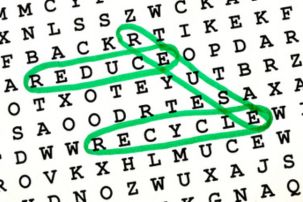Lesson summary
The aim of this activity is to encourage children to think about waste and recycling. Younger children are asked to investigate different types of waste, describing and sorting the different types of waste according to their size, shape, weight, colour and texture. Older children are asked to look more deeply at different types of waste and think about which bins these types of waste should go in.
This activity is designed to help connect children to the wonders of the natural world through sensory and play-based learning.
Activity Intention
- This activity is designed to help connect children to the wonders of the natural world through sensory and play-based learning.
Lesson guides and printables
Lesson details
Curriculum Mapping
Learning Outcome 2:
- Children are connected with and contribute to their world
- 2.3 Children become aware of fairness
Learning Outcome 4:
- Children are confident and involved learners
- 4.1 Children develop dispositions for learning such as curiosity, cooperation, confidence, creativity, commitment, enthusiasm, persistence, imagination and reflexivity
- 4.2 Children develop a range of skills and processes such as problem solving, inquiry, experimentation, hypothesising, researching and investigating
- 4.4 Children resource their own learning through connecting with people, place, technologies and natural and processed materials
Resources required
- Ages - 0 to 2: A sensory table with a range of waste items. Try to ensure that these items have differences in colour, weight, shape and texture. For example, you could use a tin can, a soft drink bottle, bottle lids, plastic tubs, paper, newspaper, magazines, corks, boxes, milk cartons etc. Make sure all waste is clean and sharp edges have been covered with masking tape.
- Ages - 2 to 3: A sensory table with a range of different waste items. Try to ensure that these items have differences in colour, weight, shape and texture. For example, you could use a tin can, a soft drink bottle, bottle lids, plastic tubs, paper, newspaper, magazines, corks, boxes, milk cartons etc. Make sure all waste is clean and sharp edges have been covered with masking tape.
- Create as many different types of bins as you have in your central (e.g. rubbish, recycling, food waste/compost/chooks). You can create the bins out of cardboard boxes or simply stick images of the different types of bins onto boxes or tubs (using your own pictures or the ones provided – Types of bins)
- Ages – 3 to 5: Print out two copies of the types of rubbish and cut into two separate piles – Types of waste.
- Create as many different types of bins as you have in your central (e.g. rubbish, recycling, food waste/compost/chooks). You can create the bins out of cardboard boxes or simply stick images of the different types of bins onto boxes or tubs (using your own pictures or the ones provided – Types of bins).
Supporting resources:
- Videos – Managing Classroom Waste and The Aluminium Cycle.
Additional info
Cool Australia Presents Waste from Cool Australia on Vimeo.
Planet Ark’s National Recycling Week started in 1996 to bring a national focus to the environmental benefits of recycling. This highly regarded annual campaign continues to educate and stimulate behaviour change by promoting kerbside, industrial and community recycling initiative. It also gives people the tools to minimise waste and manage material resources responsibly at home, work and school. In partnership with Planet Ark, we have developed lessons from early learning through to year 10 to help educators bring these important topics into the classroom.
National Recycling Week is held in the second week of November each year but you can recycle all year-round with these lessons which were designed to be used at any time. Click here to find out more about National Recycling Week and the Schools Recycle Right Challenge.


Welcome back!
Don't have an account yet?
Log in with:
Create your free Cool.org account.
Many of our resources are free, with an option to upgrade to Cool+ for premium content.
Already have an account?
Sign up with:
By signing up you accept Cool.org's Terms and Conditions(Opens in new tab) and Privacy Policy(Opens in new tab).